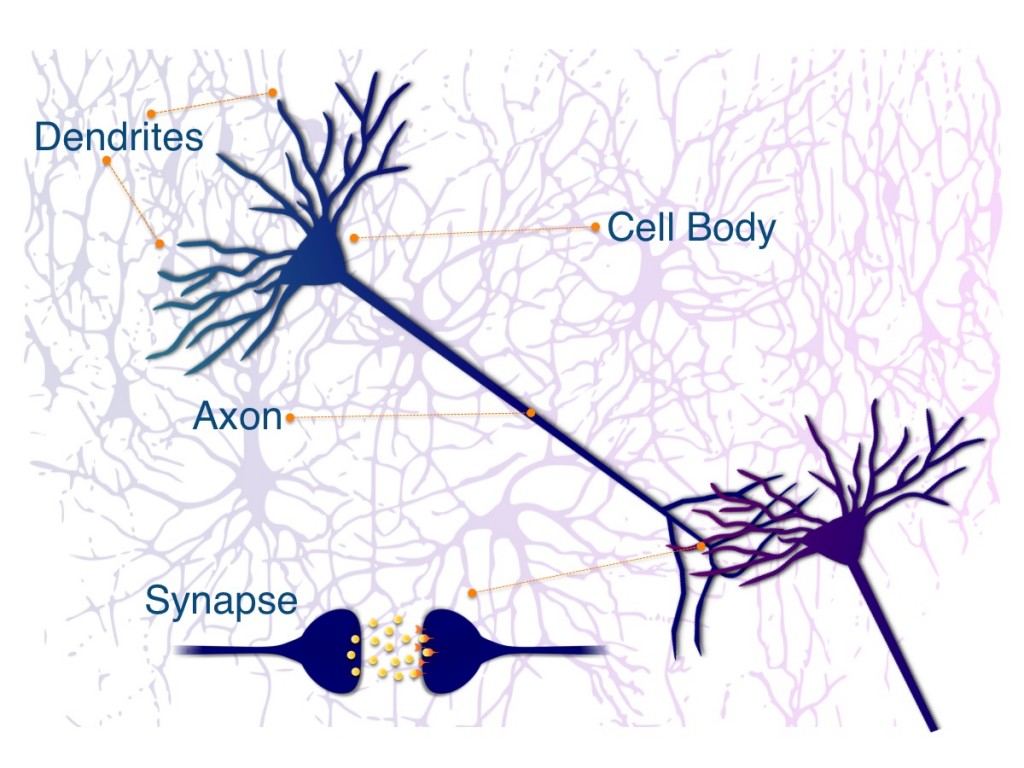
The brain is made up of billions of neurons. Neurons are communicators. They have special features that allow them to send messages with rapid speed and efficiency. Neural messages drive everything we do, from moving our arms, to our emotional responses. These messages are actually little bursts of weak electrical current. Through these signaling bursts, neurons in our bodies and brains communicate.
Dendrites form a dense network of extensions or fibers. These branching structures are input fibers, receiving information from other neurons. The weak electrical currents that carry this information travel through the dendrites to the cell body.
The cell body is a collecting pool for all the incoming signals. The cell body processes these inputs, crunching the numbers. If the collective messages are strong enough, the neuron sends a message of its own.
This message, sent in the form of an electrical current, travels down a neuron’s axon, or output fiber. Once the signal reaches the end of the axon, it is transferred to another neuron.
Connections between neurons are synapses. You can think of these connections as tiny information portals. Minuscule chemical messengers fly through the space between neurons. Traversing the tiny space, these messengers carry bursts of information from one neuron to another.
-
- Axon
- output fiber of a neuron
- Cell body
- the neuron's processing center
- Dendrites
- input fibers of a neuron
- Magnetoencephalography (MEG)
- a non-invasive brain imaging technique used to determine which regions of the brain are active
- Neurons
- cells located in the brain and throughout the body that are specialized to communicate messages
- Pruning
- the process of removing excess synapses
- Sensitive period
- a time in development when the brain is especially ready to learn a skill
- Synapse
- connection point between neurons